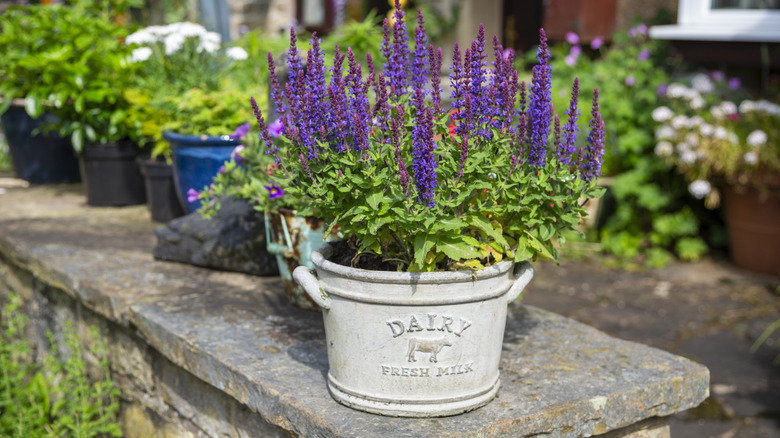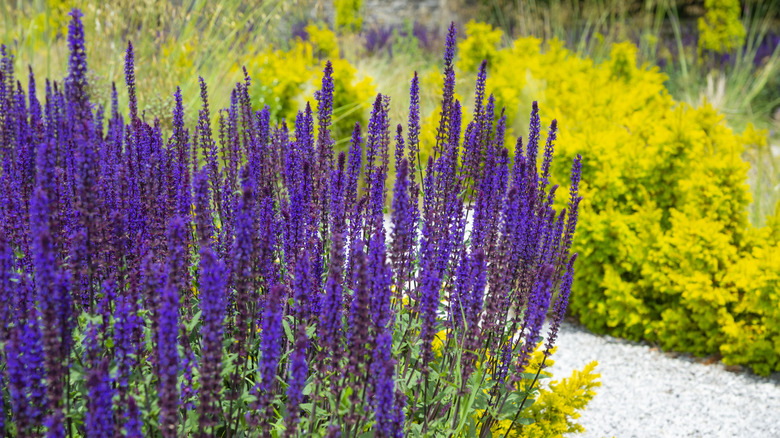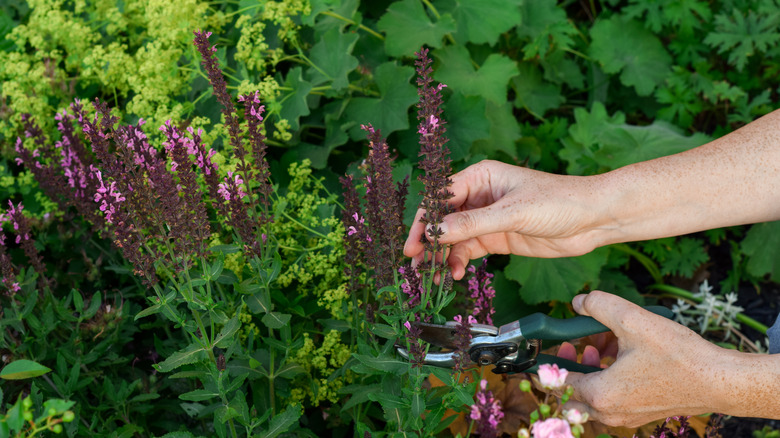How To Keep Your Salvia Plants Happy And Healthy During Winter
Salvias (Salvia officinalis) are one of the top picks for stunning container gardens. They are easy to grow, quite low-maintenance, and many varieties of salvias are perennials, which means you don't have to plant them every year. They just keep returning year after year with their dazzling beauty. However, just like most plants, winter is a challenging time for salvias. While many types of salvias are hardy, some need protection from the cold. Without the right care, you might lose salvias during the winter, and they won't make a comeback next year.
So, how can you protect your salvias in winter? Well, it depends on the hardiness of the variety as well as the local climate. But as a general rule, start by placing a mulch around the plants. A good option is to spread a 10 centimeter layer of well-rotted garden compost or manure. This, however, is only good for areas with milder winters. For areas with harsh winters, you will need to lift them from the ground and tuck them away indoors.
Winter protection and indoor overwintering for salvias
To help tender salvias survive the winter, other than applying a layer of mulch around the plants, you can also set up cages around your salvias and fill them with pine needles or straw. Mulching in the fall is essential for stronger, healthier plants in spring, as it also prevents winter and early spring weeds. However, avoid placing the mulch too early. It can delay the plants from going dormant and make them more prone to cold damage. If your salvias are growing in containers, it is usually a good idea to move them into the ground.
In cold areas, plants usually overwinter much better in the ground than in containers. However, if you must keep them in containers, use a large container that can hold a lot of soil, which will act as insulation. And, try to use one of those thick-walled containers made of glazed ceramic. But if you do decide to move them to the ground, find a spot that is protected from frosty winter winds and has well-drained soil.
There is also the option of moving salvias indoors for the winter, as most tender salvias won't be able to survive the harsh outdoor conditions of winter. You can also take cuttings and keep them in a frost-free greenhouse to overwinter. Keep them safe through the winter, and when spring comes, divide your salvia for thriving, long-lasting plants.
Watering and pruning salvias in winter
If you are unsure about the species of your salvias, it is always better to play it safe. For example, when it comes to watering salvias in winter, you only need to do so occasionally. Water the soil only when it is about to dry and avoid light showers. You might lose your salvias over the winter if the soil gets too wet or too cold. In winter, perennial salvias go dormant, so they don't need much water anyway.
Also, in regions with harsh winters, avoid pruning your salvias in the fall. It is best to wait until the spring when the new leaves start pushing through the woody stems. The foliage of the plants can provide some protection and insulation against the winter frosts. However, you can trim away the branches that are close to the ground. This keeps the pest populations in check through the winter and also decreases tangled growth in spring.


